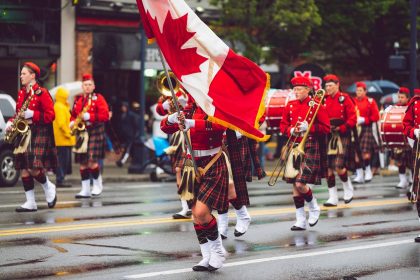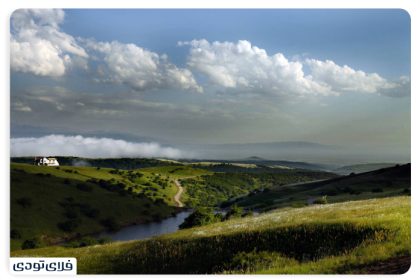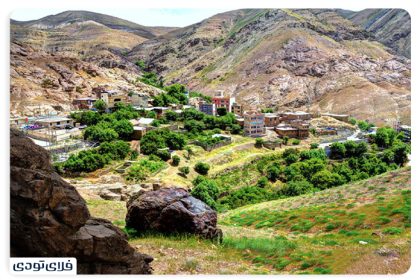Ancient Iranians were always looking for an excuse to hold a celebration, therefore, they held various celebrations and rituals for different reasons and events. One of the rituals that was a very big ancient celebration in the past and today few people are familiar with it. Summer festival or Tamuz Is. In this celebration, people used to gather under various pretexts, including harvest, and with various rituals. They celebrated the 40th day of summer. In this article from tourism magazine Fly TodayWe are going to tell you what the summer cheleh festival is and in which region of Iran it is held. To learn about this great ancient celebration, be sure to stay with us until the end of this article.
What is the summer festival?
As it was said in the introduction section, ancient Iranians believed that life should be lived happily, and for this reason, they used every excuse to celebrate and be happy. Chele Summer Festival, which nowadays few people are familiar with its ritual, is one of these festivals. As the name suggests, The summer cheleh festival is held on the 40th day of this season and at the time when the heat and sunshine reaches its peak. In fact, the summer cheleh festival is related to the first forty days of the season, which starts from the longest day of the year (June 31 or July 1) and lasts until August 10.
Considering that in the past, the economic structure of people’s lives was based on agriculture, many of Iran’s old and ancient festivals – including Cheleh – have their roots in geographical conditions. It is said that the ancient Iranians celebrated this festival to thank God for his blessings. According to the geographical conditions of our country, most of the farmers used to harvest their crops until this date and after that on the 10th day of August, they used to season and thresh. Iranians used to wear new clothes, visit each other and celebrate the hottest day of the year with their loved ones.
History of the summer festival
As you read in the previous section, it is said that The Chele festival of the summer of August was held in the days close to the harvest days, and its purpose was to give thanks for God’s blessings. If we consider this assumption as correct, we can conclude that this ancient festival dates back to the beginning of the agricultural era in Iran and settlement. Some historians also believe that this ancient ritual was celebrated in Iran since the era of Abrahamic religions and even Sumerian and Mehri myths.
All kinds of summer celebrations in different parts of Iran
Although the purpose of celebrating the summer challah festival has been the same, this ritual was also celebrated in different regions of Iran with other names. In the following, these celebrations are introduced:
Nowruz Bel celebration
Before getting acquainted with Nowruz Bel celebration and its connection with the summer season, it is not bad to get acquainted with Dilmi or Gilki calendar. The Dilmi calendar is a chronology that was used in the northern regions of the country during ancient Iran and it has a fundamental difference from the solar calendar. The main difference between these two calendars is the beginning of the new year.
Although the New Year celebration is called Dilmi Nowruz Bel, but its beginning is not the beginning of spring! The beginning of Dilami year was 17 August and people celebrated 16 August to start the new year. By this time, the people had done all their farming and paid their taxes; Therefore, they could celebrate the New Year without any worries. Nowruz Bell celebration is still held in parts of East Gilan, Taleghan, Alamut and West Mazandaran.

Lotus festival
In ancient times, the lotus flower was especially popular for people in two ways; Both because the lotus flower in Iranian culture was considered a symbol of purity and gilding of the soul and a symbol of the goddess of purity – Anahita or Venus – and also because the lotus flower bloomed with the sun’s rays.
The lotus festival is held on the sixth day of July every year at the same time as the lotus flowers bloom. In ancient times, just when the lotus flowers were blooming, people went to the springs and rivers and celebrated there. It is said that in some cities of Iran, including Farahan, Mahalat, Kermanshah and Khomin, the lotus festival is still held.
Zoroastrian ceremony in Pir Naraki, Yazd
Among the other very important celebrations that are held at the same time as the Chele Summer festival, is the Zoroastrian ceremony in Pir Naraki, Yazd. Pir Naraki is one of The most important places to visit in Yazd It is one of Zoroastrian shrines located in Mehriz city of Yazd. Currently, the doors of this shrine are open to all tourists and travelers of Yazd city, but during the period of August 12-16, when Pir Niarki ceremony is held, only Zoroastrians are allowed to visit this place.

Although Pir Naraki ceremony starts on 12 August, but the date of its main ceremony is 16 August. This ritual is not only an important religious ceremony and besides prayer, various festivals and competitions such as photography, painting, poetry, calligraphy and various sports competitions are also held in it.
What is the exact date of the summer festival?
Ancient Iranians called the month of July Tammuz. Tammuz is a term that means burning heat and summer, and in some calendars, Tammuz is the same month as July in the solar calendar. Chale Summer or Chale Tamuz begins on the first day of July, which is also the longest day of the year, and continues until August 10, when the sun’s rays reach their most vertical position. In the past, this day was called Chele Summer and it was one of the most important ancient celebrations of our country.
The difference between the big and the small
Due to the fact that our ancestors did not have accurate time measuring tools in the past, they divided time into different parts with the same basic and simple tools. Small chela and big chela are one of these sections. In general, the first 40 days of each season are considered big caleh and the next 20 days are considered small caleh.
In winter, the large chela starts from the 1st of December to the 10th of Bahman, and the last 20 days of Bahman are also called the small chela. The big and small chela of summer were also calculated in the same way; That is, from July 1st to August 10th, it was called Big Cheleh and the last 20 days of the summer season were also called Koch Cheleh. The summer cheleh festival is held on the last day of the great cheleh.
The customs of the summer festival
Although currently the summer cheleh festival has been forgotten, in the past it was one of the most important festivals for the ancient Iranians and they attached great importance to it. The Cheleh festival in the summer of August was celebrated in a special way in every city, and Iranians had special customs for this celebration.
one of The most important customs of the summer celebration It was that some men wore special clothes and hats and circled around the fire. At the same time, local musicians played music specific to this ritual. Finally, when the day was over and the sun was setting, they would build a fire and people would recite poems around the fire. Finally, next to this fire, they would praise Ahura Mazda and pray to him.

Summer cheleh ceremony in different cities
As it was said, the summer solstice was celebrated in different cities with various rituals and ceremonies. In the following, some of the cities where the Chele Mardad festival is still held are introduced:
Summer camp in Khorasan
Khorasan is one of the few regions where Chele Tammuz is celebrated. In this region, the first day of July is considered the beginning of Chaleh and the longest day of the year is celebrated (especially in South Khorasan). In Khorasan, the first 40 days of summer are called Chaleh Tammuz and they celebrate the 10th of August, when the Chaleh of summer ends.
Summer camp in Dilman, Gilan
As we said in the previous sections about the Dilmi calendar, in this type of calendar, the new year does not begin with the beginning of spring, and the people who used this calendar spent August 13-17 celebrating the beginning of the new year. This festival is also called Nowruz Bell, and the local people of Dillman used to shake their houses, wear new clothes, stomp around the fire and sing poetry.
Summer festival in Kermanshah
Zardoi village in Paveh, Kermanshah province is one of the other areas where the summer festival is celebrated. Chele Summer Festival is held under the pretext of the beginning of the harvest of garden products and the beginning of the process of lowering the temperature, and includes various rituals such as tambourines, scarecrows, performing local music, performance of Kurdish Halparke dance, distribution of garden products, etc. Is.
If you decide to travel to this province, we recommend this article Sightseeing places in Kermanshah Read in Fly Today tourism magazine.

Chele Summer Festival is one of the oldest festivals in Iran
One of the oldest ancient festivals in Iran, which has largely been forgotten today, is the Chele festival in the summer of August. This ancient ceremony was held on the 40th day of August and at the same time as the beginning of harvest and the process of lowering the temperature, and the purpose of holding it was to celebrate and celebrate. In this article, we talked about this celebration and its history and talked with you about its rituals.
Have you ever participated in the summer festival? Share your experiences or what you have heard about this celebration with us.
Frequently asked questions about the summer festival
When is the summer festival?
This celebration is held at the same time as the 40th day of summer and on August 16.
In which regions of Iran is Cheleh celebrated?
Khorasan, Kermanshah, etc. are among the regions that hold the summer chele ceremony.
What day is the 1402 Chele festival?
The date of Tammuz celebration in 1402 is August 10.
In the name of the Lord of the tablet and the pen!
Words are refuge, glory, poetry, joy… If there are no words, how can one endure the suffering of existence? I am the one who was born to make the world more beautiful with words. May the future generations read my writings and say: Who is Hafez Nagshad who combed the words from the face of the mask to the head of the speech…
RCO NEWS
















